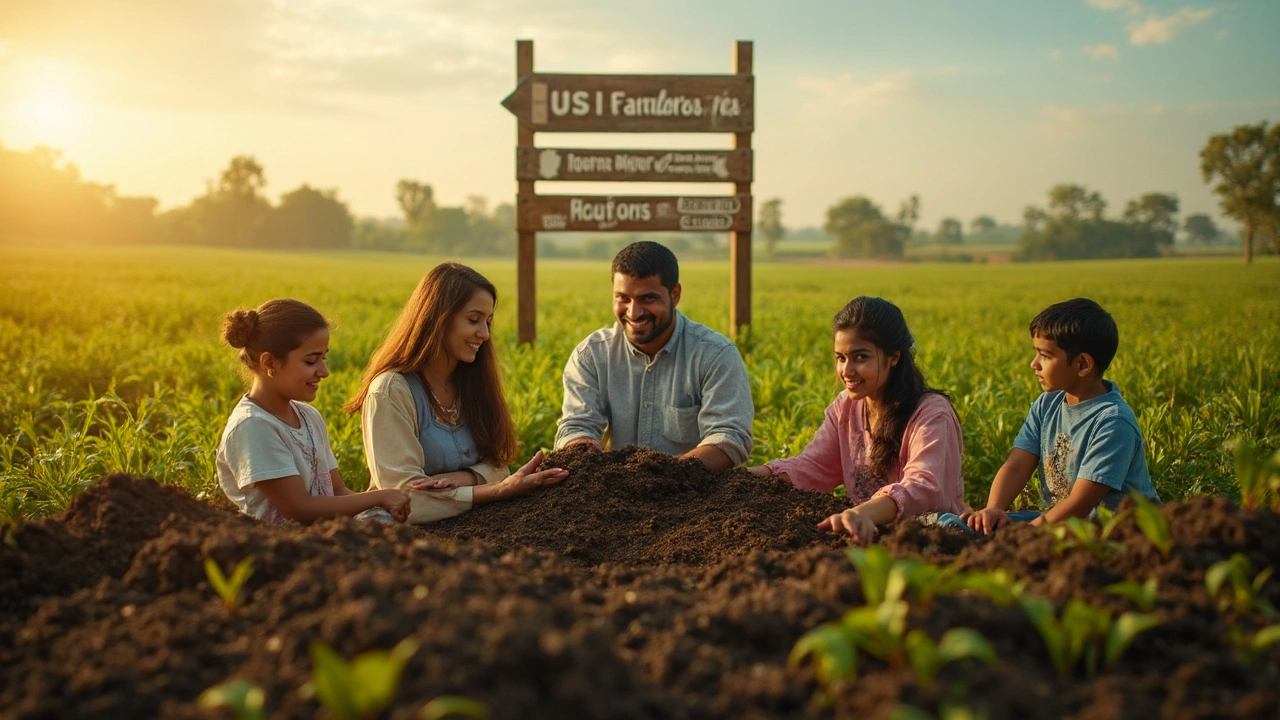Best Soil in the US: A Practical Guide for Homeowners and Gardeners
When you buy a lot, plant a garden, or think about building a house, the soil under your feet matters more than you might think. Good soil can boost curb appeal, improve plant growth, and even affect foundation stability. Let’s break down the best soil options across the United States and give you clear steps to pick the right one for your project.
What Makes Soil "Best"?
Soil quality isn’t a one‑size‑fits‑all thing. For gardening, you want a mix that holds enough water but also drains well. For building, you need soil that’s compact and not prone to shifting. The two main factors are texture (how much sand, silt, and clay there is) and organic matter (the dead plant material that feeds microbes). When both balance out, you get healthy plants or a solid ground base.
Top Soil Types Across the US
1. Loam – The Gold Standard
Loam is a balanced blend of sand, silt, and clay with plenty of organic matter. It’s found in the Midwest (Iowa, Illinois) and parts of the Pacific Northwest. Loam holds moisture, drains excess water, and is easy to work with, making it ideal for vegetable gardens and lawn lawns. If you’re buying land in these regions, loam usually means fewer headaches for both planting and building.
2. Sandy Soil – Great for Drainage
Sandy soil dominates the Gulf Coast and parts of the Southwest. It drains quickly, so plants that hate waterlogged roots (like tomatoes and carrots) thrive. However, sand doesn’t hold nutrients well, so you’ll need regular compost or fertilizer. For foundations, sand can be compacted into a solid base, but you may need deeper footings in areas prone to shifting.
3. Clay Soil – Strong but Slow
Clay is common in the Ohio River Valley and parts of the South. It’s dense, holds water, and can become very hard when dry. Gardens on clay need extra organic matter to improve texture. On the upside, clay’s firmness can support heavy structures if properly prepared, but you might need to add sand or gravel to avoid cracking.
4. Silt Soil – Fine and Fertile
Silt soil is found in the Great Plains and parts of the Mid-Atlantic. It feels smooth and holds nutrients well, but it can become compacted easily. Adding organic material or coarse sand helps keep it loose. For building, silt requires careful compaction to prevent settling.
5. Rocky Soil – Limited but Manageable
Mountainous areas like Colorado and the Appalachians often have rocky soil. It’s great for drainage but offers little organic matter. If you’re planting, you’ll need raised beds or heavy mulching. For foundations, you may need to remove rocks or use special footings to distribute weight.
Knowing which soil you have is the first step. A simple soil test kit from a garden store can tell you the texture and pH in minutes. If you’re buying land, ask the seller for a recent soil survey – many states require one for agricultural properties.
Once you know the type, improve it with a few easy actions: add compost or aged manure to boost organic content, mix in coarse sand for clay, and use mulch to keep moisture steady. For construction, consult a local engineer who can recommend footings based on your soil’s bearing capacity.
Bottom line: the best soil for you depends on what you plan to do. Loam is the all‑round winner for gardens, while well‑compacted sand or clay can support solid foundations if handled right. Test, amend, and plan accordingly, and your land will work for you, not the other way around.
Best Soil in the US: Where Is It and Why It Matters for Land Buyers
by Arjun Mehta Jun 14 2025 0 LandThinking about buying land and wondering which US state has the best soil? This article cuts through the confusion, highlighting where you’ll find the richest dirt and why it matters for farming and investment. Get to know which states stand out, what makes their soil unique, and key tips if you’re looking to build, farm, or flip land. We’ll dig into real data and everyday examples to help you make a smart move. Soil isn’t just dirt—if you want your land to work for you, you need the right foundation.
READ MORE